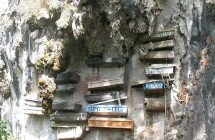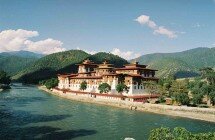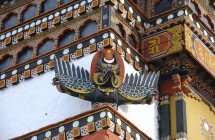When the Philippines was under Spanish colonial rule during the 1500s to 1800s, the center of Spanish occupation was Intramuros. Founded in 1571 by the Spanish conquistador Miguel Lopez de Legazpi, Intramuros was built on the ruins of a native settlement by the Pasig River.
Miguel Lopez de Lagazpi proclaimed the site as the new capital of the country. Today, Intramuros is a 64 ha area in Manila, the capital city of the Philippines. It is the oldest district of the city.
Built as a fortress city, Intramuros is nearly fully surrounded by stone walls spanning 3 kilometers in length. The walls are 6 meters high. The name “Intramuros” means “within the walls”, which is why it is also referred to as the Walled City, or Ciudad Murad in Spanish.
Government buildings, churches, military barracks, schools, hospitals, convents, cobblestone streets and colonial homes could be found inside Intramuros. A vibrant community, it was the center of political, military and religious power of the Spanish colonists.
Only the Spanish elite and mestizos (mixed race, such as a Spanish-Filipino person), were allowed to live inside the Walled City. The local Filipino and Chinese populace had to leave before the city gates were locked at night.
Surrounding the old city was a moat created in 1603. Entry and exit points were controlled through seven fortified gates. Because of its location near Manila Bay, which is a major port of entry into the Philippines, Intramuros came to be under attack on several occasions throughout history.
Chinese, Dutch, Portuguese as well as Sulu pirates had all attempted to capture the city. However, none were successful. During World War II, much of Manila was bombed and Japanese forces took Intramuros and used it as their fort and prisoner-of-war camp.
The Allied forces bombed the city to liberate it from Japanese forces and many structures inside the Walled City were destroyed. Many colleges and convents decided to rebuild outside the Walled City instead.
The moat was later filled to prevent it from becoming a breeding ground of disease. It has been transformed into a golf course. The garrison that used to be Fort Santiago is now one of the most popular attractions inside Intramuros.
In the 1980s, the Philippine government led a major restoration of the city, although there have been some modern-day establishments built inside. Old lamp posts have been installed to increase the Spanish-era atmosphere. Many of the gates and parts of the wall have been restored.
One of the most popular and important sites is Fort Santiago, which was the citadel. The Philippine National Hero Jose Rizal was imprisoned in the fort before he was executed in 1896 by the Spanish army.
The Rizal Shrine houses many of his written works, mementos and personal belongings, such as clothing and artworks. The shrine is dedicated to his life’s work. There are bronze footsteps in the fort to represent Jose Rizal’s final walk from his prison cell to the location of his execution.
Near the fort is the Manila Cathedral which features neo-romanesque architecture. It serves as the see of the Archbishop of Manila and was where Pope Francis celebrated Mass for the clergy during his 2015 Papal visit to the country. The cathedral has many beautiful sculptures, stained glass and carvings on its walls and doors.
Another popular location inside Intramuros is the San Agustin Church. Built between 1587-1606, it is considered the oldest church in the country. It was declared a UNESCO World Heritage Site and feature baroque architecture.
The medieval splendor and historical heritage of these two churches make them a popular venue for church weddings.
Other points of interest inside Intramuros are plazas, restored city games and museums such as Bahay Tsinoy, which is dedicated to the contributions of the Chinese-Filipino community, and Casa Manila which recreates a wealthy Intramuros home.
Take a cab to Intramuros. By LRT, alight at Central Terminal Station then either take a cab or a 25-minute walk to Intramuros.
 Guge Kingdom
Guge Kingdom  Chittorgarh Fort, Rajasthan
Chittorgarh Fort, Rajasthan  Sepilok Orangutan
Sepilok Orangutan  Dudhsagar Trek in Goa
Dudhsagar Trek in Goa  Vagator and Chapora
Vagator and Chapora  Doi Inthanon National Park, Chiang Mai
Doi Inthanon National Park, Chiang Mai  Koh Samui, Thailand
Koh Samui, Thailand  Qasr el Yahud, The Holy Land
Qasr el Yahud, The Holy Land  Mount Abu in Rajasthan
Mount Abu in Rajasthan  Corregidor Island
Corregidor Island  Taoist Temple in Cebu City
Taoist Temple in Cebu City  Luneta Park
Luneta Park  Biak na Bato National Park
Biak na Bato National Park  City of Dreams Manila
City of Dreams Manila  Barasoain Church
Barasoain Church  Mount Pinatubo
Mount Pinatubo  Mount Manalmon
Mount Manalmon  Hanging Coffins in Sagada
Hanging Coffins in Sagada  Hội An
Hội An  Ha Long Bay
Ha Long Bay  Ancient Acropolis in Bergama
Ancient Acropolis in Bergama  Lakshadweep – India’s tiniest...
Lakshadweep – India’s tiniest...  Kodaikanal – The Princess of Hill S...
Kodaikanal – The Princess of Hill S...  Gal Vihara Statues
Gal Vihara Statues  Punakha Dzong
Punakha Dzong  Trashichho Dzong
Trashichho Dzong  Taktshang Goemba
Taktshang Goemba  National Memorial Chorten
National Memorial Chorten  Coorg – Scotland Of India
Coorg – Scotland Of India  Samadhi Statue
Samadhi Statue  Ruwanwelisaya Stupa
Ruwanwelisaya Stupa  Andaman and Nicobar Islands
Andaman and Nicobar Islands  Mount Kinabalu
Mount Kinabalu  Sepilok Orangutan
Sepilok Orangutan  Victoria Memorial
Victoria Memorial  Ladakh – India’s Little Tibet
Ladakh – India’s Little Tibet  Bhangarh Fort
Bhangarh Fort  Tokyo Midtown
Tokyo Midtown  Asakusa and Sensoji Temple
Asakusa and Sensoji Temple  Tokyo Sky Tree
Tokyo Sky Tree  Tokyo Dome City
Tokyo Dome City  Sunshine City Aquarium
Sunshine City Aquarium  Dambulla Cave Temples
Dambulla Cave Temples  Polonnaruwa
Polonnaruwa  Palolem and Patnem
Palolem and Patnem  Agonda
Agonda  Udaipur
Udaipur  Anjuna
Anjuna  Vagator and Chapora
Vagator and Chapora  Dumas Beach, Gujarat
Dumas Beach, Gujarat ">CC BY-SA 3.0 via Wikimedia Commons.
 Dow Hill
Dow Hill  National Library
National Library  Grand Paradi Towers
Grand Paradi Towers  Delhi Cantonment
Delhi Cantonment  Savoy Hotel
Savoy Hotel  Three Kings Church
Three Kings Church  Chadar Trek in Leh
Chadar Trek in Leh  Dudhsagar Trek in Goa
Dudhsagar Trek in Goa  Cycling in the Kangra Valley
Cycling in the Kangra Valley  River Rafting in Rishikesh
River Rafting in Rishikesh  Rishikesh – The Yoga Capital of the...
Rishikesh – The Yoga Capital of the...  Fort William
Fort William  India Gate
India Gate  Giresun, Turkey
Giresun, Turkey  Ordu
Ordu  Asklepion Temple in Bergama
Asklepion Temple in Bergama  Thiruvananthapuram, Kerala
Thiruvananthapuram, Kerala  Haci Hekim Turkish Bath in Bergama
Haci Hekim Turkish Bath in Bergama 